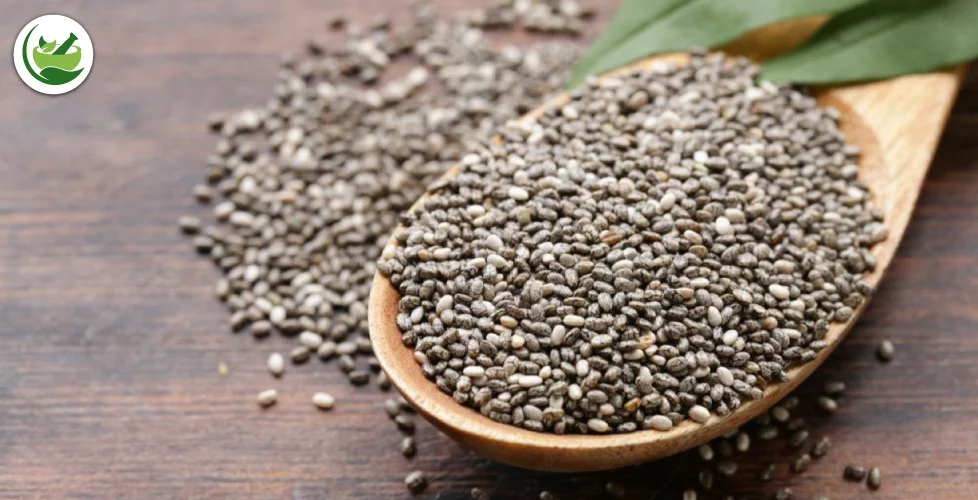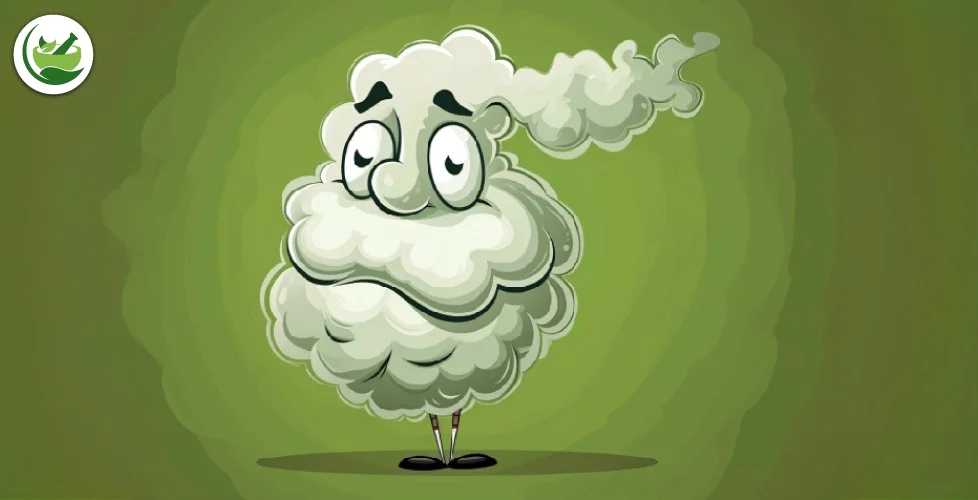Chia seeds have become a popular superfood due to their high nutrient content and numerous health benefits. However, many people have reported experiencing gas and bloating after consuming chia seeds. In this blog, we will explore whether chia seeds make you gassy, whether they can cause gas, the potential reasons behind this digestive issue, and how to mitigate it.
Related blog Health Benefits Of Black Vs. White Chia Seeds
Key Takeaways
- High Fiber Content: Can cause gas if consumed in large quantities.
- Water Absorption: Chia seeds expand and may cause bloating if not taken with enough water.
- Fermentation: Fiber fermentation by gut bacteria produces gas.
- Solutions: Gradual introduction, adequate hydration, and proper portion sizes can mitigate gas and bloating.

Understanding Chia Seeds
Chia seeds are tiny black or white seeds from the Salvia hispanica plant, renowned for their high content of omega-3 fatty acids, fiber, protein, antioxidants, and essential micronutrients. These nutrient-dense seeds have gained popularity as a versatile superfood with numerous health benefits. They are rich in:
- Omega-3 fatty acids
- Fiber
- Protein
- Antioxidants
- Various micronutrients (calcium, magnesium, phosphorus)
Do Chia Seeds Make You Gassy?
Chia seeds are celebrated for their impressive nutritional profile, but they can sometimes cause digestive discomfort. In this blog, we delve into whether chia seeds make you gassy, exploring the causes and providing practical solutions to mitigate this common issue.
Related blog Can Chia Seeds Cause Constipation: Myth Or Reality?
Causes of Gas and Bloating from Chia Seeds
Chia seeds are packed with nutrients but can sometimes cause gas and bloating. Understanding the underlying causes can help you enjoy their benefits without discomfort.
High Fiber Content
Chia seeds are extremely high in fiber, with about 10 grams of fiber per ounce (28 grams). A sudden increase in fiber intake can lead to gas and bloating as your digestive system adjusts.
Water Absorption
Chia seeds can absorb up to 12 times their weight in water, forming a gel-like substance. If not properly hydrated, chia seeds can expand in the digestive tract, causing gas and discomfort.
Prebiotic Properties
The fiber in chia seeds acts as a prebiotic, feeding the beneficial bacteria in your gut. While this is generally good for your digestive health, it can also produce gas as a byproduct of fermentation by these bacteria.
Individual Sensitivity
Some individuals may have a more sensitive digestive system that reacts to chia seeds differently, leading to gas and bloating.
Related blog How The Benefits Of Chia Seeds And Diverticulitis Can Improve Your Digestive Health
Fiber Content in Common Foods
Fiber is an essential nutrient that is crucial in maintaining digestive health and overall well-being. Understanding the fiber content in common foods can help you make informed dietary choices to meet your daily fiber needs and support a healthy digestive system.
| Food Item | Fiber Content (per 100g) |
|---|---|
| Chia Seeds | 34.4g |
| Flax Seeds | 27.3g |
| Oats | 10.6g |
| Almonds | 12.5g |
| Lentils | 7.9g |
Solutions to Reduce Gas from Chia Seeds
Experiencing gas and bloating from chia seeds can be uncomfortable, but there are several effective strategies to mitigate these issues. Here are some practical solutions to help reduce gas and make your chia seed consumption more comfortable.

Gradual Introduction
Start Small: Begin with a small amount of chia seeds and gradually increase your intake to allow your digestive system to adjust.
Example: Start with 1 teaspoon per day and slowly work up to the recommended serving size (1-2 tablespoons).
Proper Hydration
Soak Chia Seeds: Always soak chia seeds in water or another liquid before consuming them to allow them to expand and form a gel outside of your digestive tract.
Example: Soak 1 tablespoon of chia seeds in 1 cup of water for at least 15-20 minutes before consuming.
Increase Water Intake
Stay Hydrated: Drink plenty of water throughout the day to help your digestive system process the increased fiber intake.
Recommendation: Aim for at least 8-10 glasses of water daily.
Monitor Your Fiber Intake
Balance Your Diet: Ensure that you are not consuming too much fiber at once by balancing chia seeds with other foods.
Example: Combine chia seeds with low-fiber foods like yogurt or smoothies.
Listen to Your Body
Pay Attention: Notice how your body reacts to chia seeds and adjust your intake accordingly. If you experience discomfort, reduce your serving size or frequency of consumption.
Related blog The Chia Seeds Ulcerative Colitis Benefits: Implications For Health And Diet
How to Incorporate Chia Seeds into Your Diet
Incorporating chia seeds into your diet can be a simple and delicious way to boost your nutrient intake. Here are some creative and easy methods to enjoy the health benefits of chia seeds in your everyday meals.
| Meal | How to Use Chia Seeds | Notes |
|---|---|---|
| Breakfast | Add to oatmeal or yogurt | Soak overnight for a smoother texture |
| Snack | Mix into smoothies or juice | Blend well to avoid clumping |
| Lunch | Sprinkle on salads or soups | Use soaked chia seeds for easier digestion |
| Dinner | Incorporate into sauces or dressings | Hydrate first to prevent thickening |
| Dessert | Make chia seed pudding | Use milk or a dairy alternative to soak |
Related bog Do Chia Seeds Make You Poop? What You Need To Know
Conclusion
While chia seeds can cause gas and bloating in some individuals, these issues are often manageable with a few adjustments. By gradually introducing chia seeds into your diet, ensuring proper hydration, balancing your fiber intake, and listening to your body’s signals, you can enjoy the numerous health benefits of chia seeds without the uncomfortable side effects. Remember to always consult with a healthcare professional if you experience persistent digestive issues.






